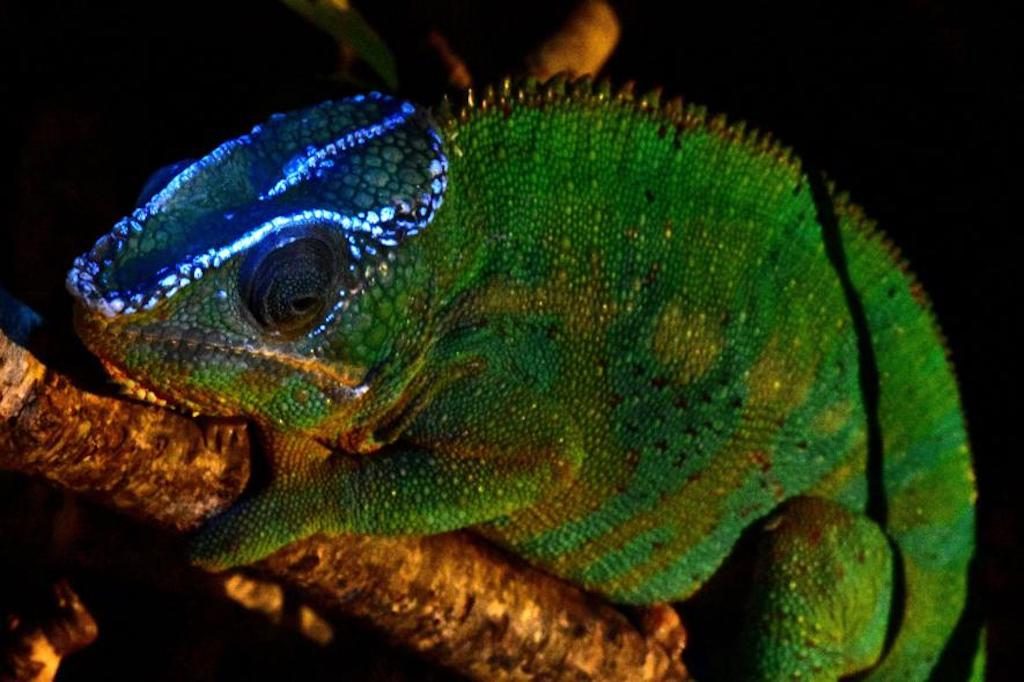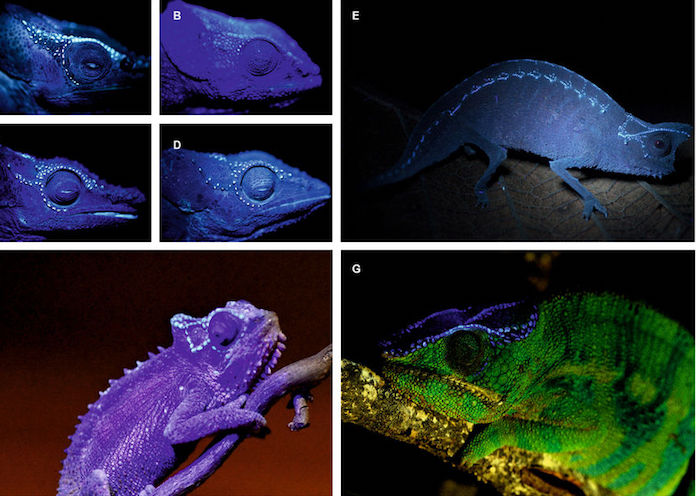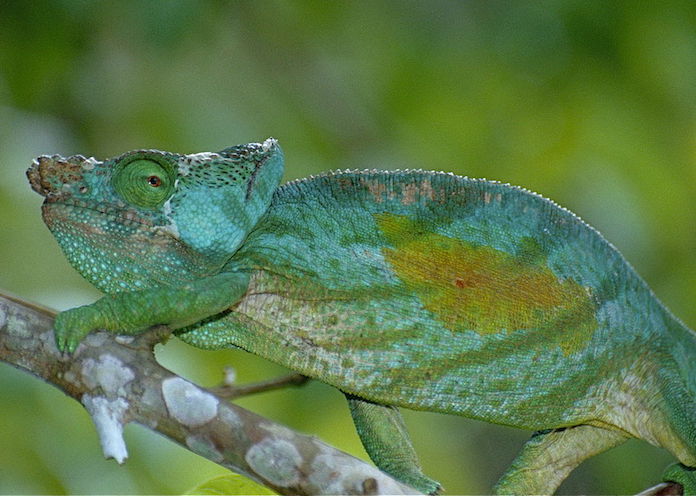
Well, we know who we’re inviting to our next rave. A recent study found that chameleon bones glow under UV light, in the first known instance of bone-based fluorescence in a vertebrate.
A team of German researchers tested the UV light on 31 species of Calumma chameleons, which are native to Madagascar. They observed a bright blue glow emanating from the chameleons’ bones and shining through their skin, according to results published in the journal Nature.

Scientists are still unsure of the exact purpose of the glowing bones, though they hypothesize that gaps in the skin where bony tubercles protrude allow the bones to absorb sun rays — kind of like holding a glow-in-the-dark toy under a lamp before turning out the lights.
They also have some ideas about why it happens. Blue is a rare color in the chameleon’s natural habitat, and the extra pizazz might help them stand out. The UV light also illuminated previously unobserved patterns on the reptiles’ skin, and the researchers believe the glowing patterns could have something to do with recognition between species or individuals.

Chameleons are well-known for their shade-shifting color scheme. The reptiles have four thin layers of skin, each containing a different pigment, which helps them alter their hue. They don’t exactly change colors to match their environment — a common misconception — but they do adjust their pigment for a number of other reasons, including aggression, fear, and a change in temperature, humidity, or light conditions.
There’s a romance factor, too: males will make themselves a brighter shade to attract a mate or establish dominance over a competitor. Females use colors to indicate whether they are searching for a mate, rejecting male advances, or pregnant.
While this is the first instance of glow-in-the-dark bones discovered in a land-dwelling vertebrate, similar discoveries could be on the horizon. The first fluorescent frog was discovered in the Amazon last spring, and scientists have long known that as many as 75 percent of deep sea-dwelling species are bioluminescent. As research continues into this unique trait, who knows what else will come to light?
RELATED VIDEO: Venomous Snake vs. Chameleon




